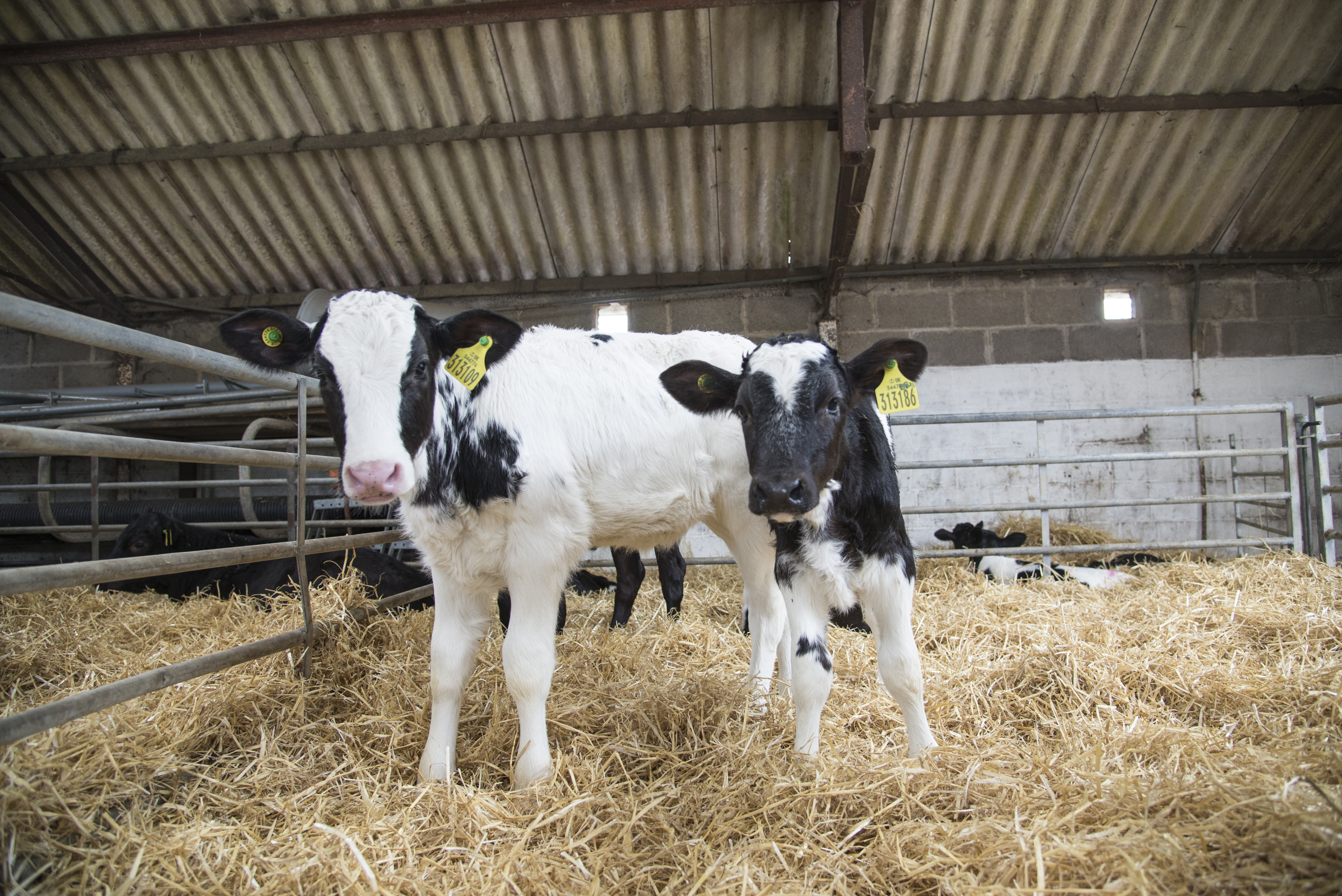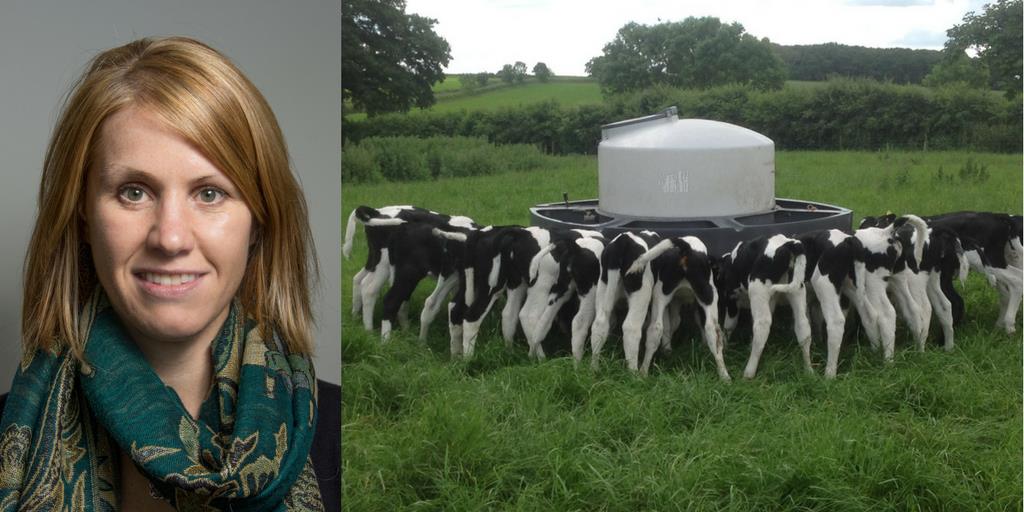The fate of dairy bull calves is not a secret; it’s actually a key focus area within the industry-led Dairy Cattle Welfare Strategy. We’ve agreed three target areas: we want to increase the percentage of dairy bull calves utilised in the UK food chain, reduce the number of calves exported and reduce the number of calves euthanised at birth.
Let’s be honest here. No dairy farmer wants to dispose of calves at birth. Farmers don’t breed their cows, feed their cows, and manage them through calving to then dispose of that calf at birth. The truth is that in many cases there is no market for that male animal – either due to retailer specification, or consumer preference (some might say they’re the same).
Here’s a lowdown of some of the options out there for dairy farmers:
Entering the beef supply chain
The majority (81% at the last count) of dairy bull calves are reared until they’re over a year old and are then enter the beef supply chain at retail, food service or manufacturing. Indeed half the beef produced in the UK originates from the dairy herd. The number of dairy bull calves retained in the British beef chain rose from 245,586 in 2006 to 392,473 in 2015 – a rise of 59%.
There are a number of positive examples of how the supply chain is trying to develop markets for dairy bull calves. A number of retailers have schemes that match calves from dairy farms with calf rearers who then rear groups of calves of the same age together. There are also independent calf rearing organisations such as Meadow Quality and Blade Farming and Buitelaar. All these have a minimum specification and standard for the calves they procure and the price paid can depend on the quality of the animal.
High welfare veal
A high profile campaign by NGOs in the 1980s led to many consumers just turning off veal. Pictures of calves in veal crates, fed only milk and no roughage to produce a lean, white, soft meat stopped veal production and reduced the sale of the product here. That said many of those crates weren’t being used by UK farms – with the highest demand for veal being on the Continent. UK calves were exported across the channel to satisfy a demand for veal elsewhere in the EU. Another area that NGOs fought against was live exports, however well managed, and today very few calves are exported (and generally that’s from Northern Ireland to Ireland). So that completely closed a market for dairy bull calves.
Ever the pragmatists, the UK industry then developed high standards for veal production under the high welfare rose veal scheme. Calves are reared in groups and fed a balanced diet. Some farmers are producing this type of veal, and selling through farmers markets and direct from farm. A few retailers also sell this British veal but consumer still shy away from the product, remembering those pictures of old.
Use of sexed semen and breeding:
To reduce the amount of bull calves born more and more farmers are using sexed semen – ensuring that they produce enough female dairy replacements and crossing with beef to ensure a higher value calf at the end. In 2017, an NFU survey found a 7% increase in the number of farmers using sexed semen compared to the previous year. Sexed semen usage will continue to rise as confidence in the technology grows, more semen is sexed, and the cost premium over unsexed semen reduces.

Live exports
The number of calves exported live reduced from 80,700 in 2006 to less than 2,000 in 2014. This is less than 0.5% of dairy calves born in the UK. Live exports is a legitimate and legal practice which our competitors outside the UK are allowed to practice. I fully appreciate that it’s better to find home markets for these animals, but we need to appreciate that UK dairy farmers aren’t on a level playing field with their neighbours in Ireland even. Plus, the home markets need to work for dairy farmers economically.
Euthanised at birth
There’s no accurate data on the number of calves disposed of at birth. Calculations are made of the % of dairy females registered v % of dairy males registered with an estimate then of use of sexed semen thrown in. The latest estimates from the RSPCA and others claim that 19% of dairy bull claves are killed at birth, but no questions are asked as to why this is the case. A large proportion will be stuck on TB restricted farms, others would not hit market specification. Rearing costs might also have increased due to the higher cost of milk powder, grain and straw.
The TB situation
The majority of dairy farms are not set up to rear dairy bull calves and have limited capacity (in housing and staff availability) to do so. When movements and sales of animals are restricted by TB rules the situation gets even more difficult. The marketing options for TB restricted calves are limited. They can only be sold into an Approved Finishing Unit (AFU) or to a farmer with an Isolation Unit (where all calves need to be from a single source, ideally in a large batch in one go – rarely practical for dairy farms who have different aged calves). Most AFUs don’t allow for grazing, and the few that do are under threat. Very few housed AFUs want to take on young dairy calves when they will remain housed for the entire fattening period up to slaughter as this is not economically viable for the business. Calf buying groups such as Meadow Quality and Blade have made a difference, but they can only deal with limited numbers and they are usually full to capacity with calves from non-TB farms.
Conclusion
The issue of dairy bull calves is multi-factoral with no simple solution. There has been substantial progress over the years by farmers, milk buyers, retailers and calf rearers to ensure more calves are utilised in the food chain. But we’re not complacent – more economically acceptable options are needed both for TB restricted and TB free farms.
"The bottom line is that we need a market outlet for these calves, if it’s not economic to rear them, farmers won’t do so"
So as a supply chain let’s work together on solutions rather than playing the blame game. Ultimately the answer lies with consumers in the purchasing decisions they make.
